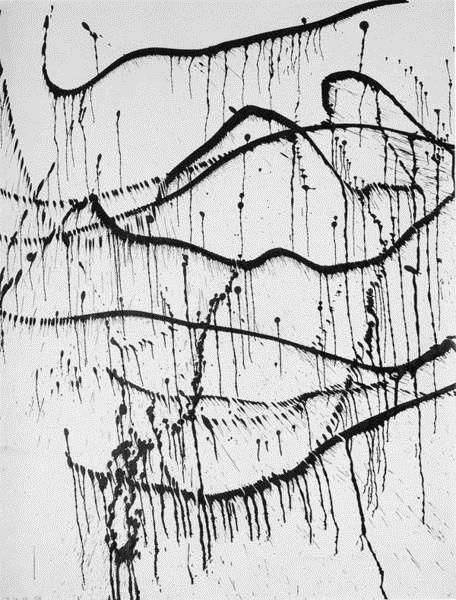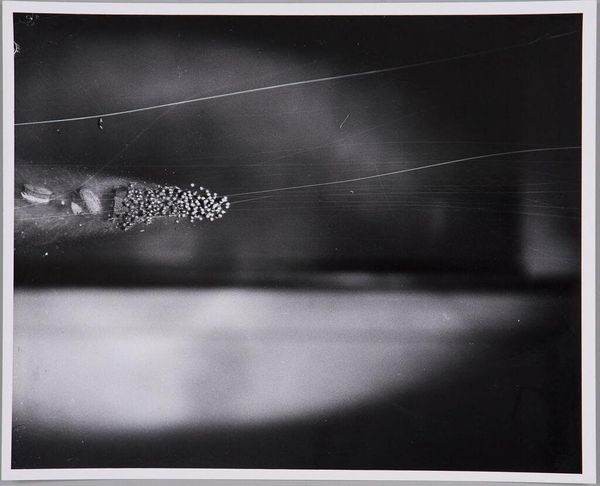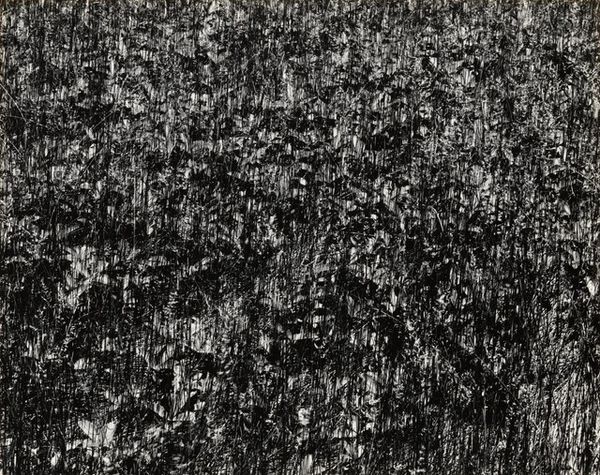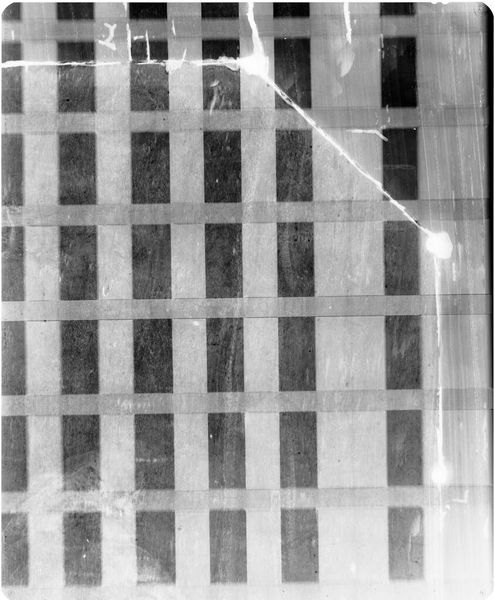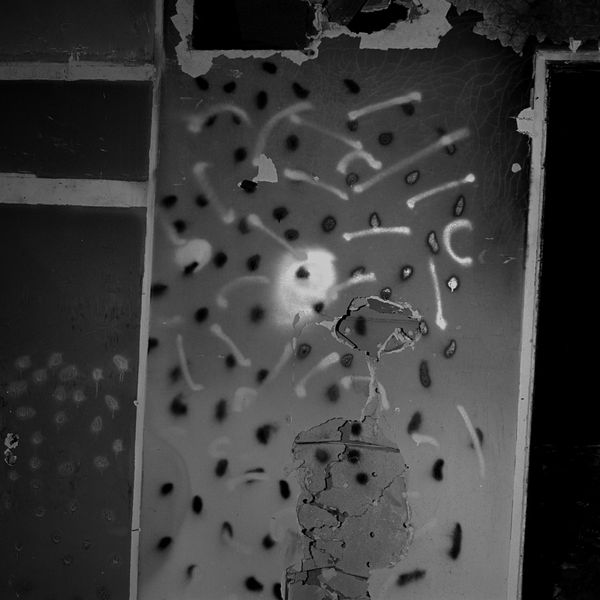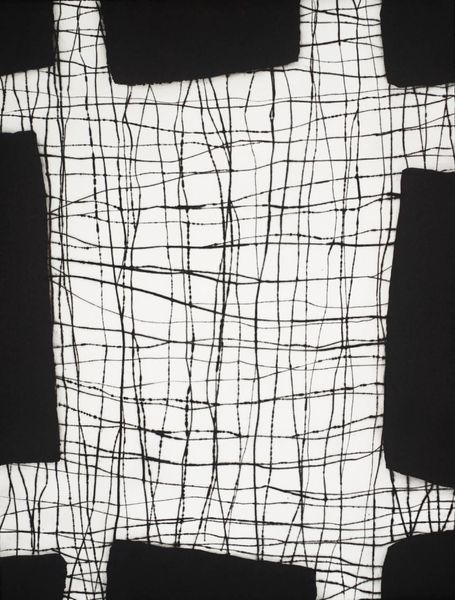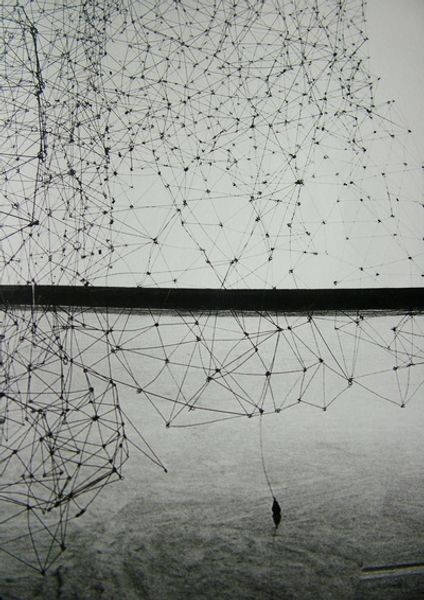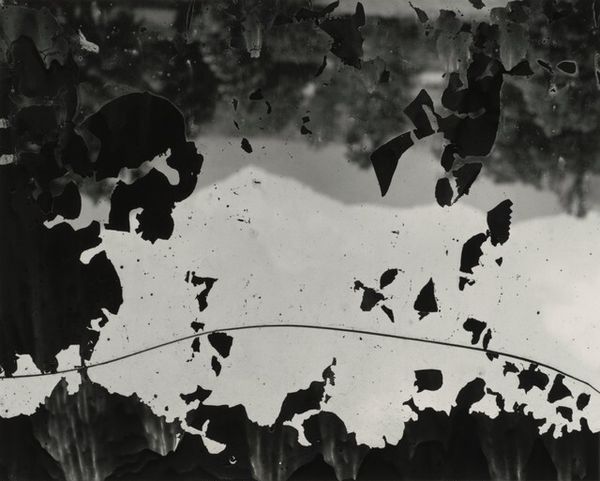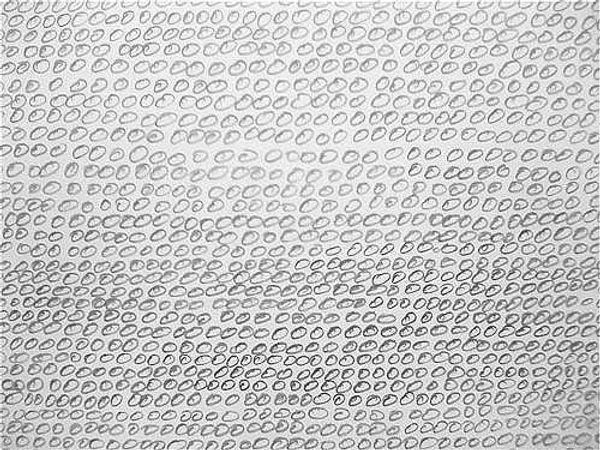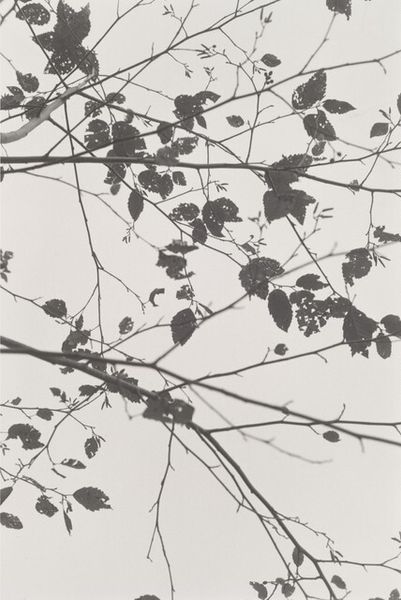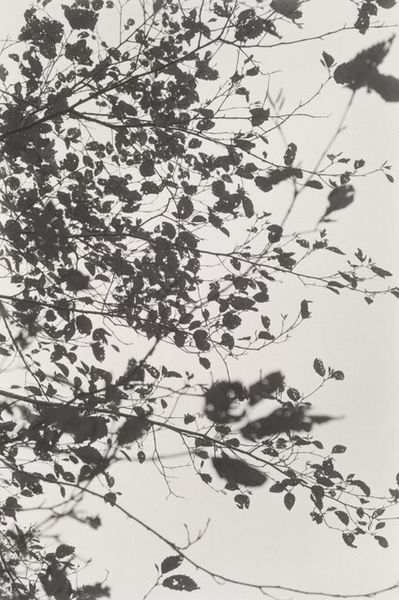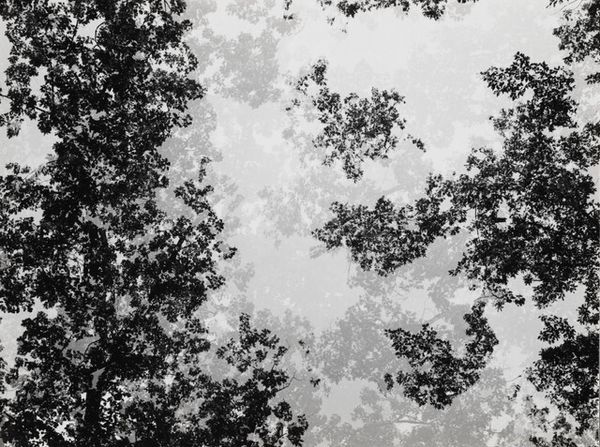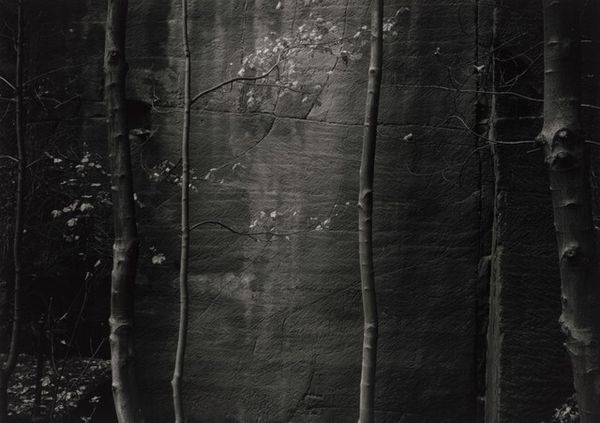
Dimensions: image: 34.93 × 34.93 cm (13 3/4 × 13 3/4 in.) mat: 62.23 × 59.69 cm (24 1/2 × 23 1/2 in.) framed: 64.14 × 61.6 × 3.81 cm (25 1/4 × 24 1/4 × 1 1/2 in.)
Copyright: National Gallery of Art: CC0 1.0
Curator: John Divola's "74V01," dating from sometime between 1973 and 1993, presents us with a stark, black-and-white photographic study of a corner interior. The walls and floor are heavily marked with what appears to be spray-painted or stained daubs. What’s your immediate reaction? Editor: Claustrophobic. The image evokes a sense of confinement, and those dense, dark marks read as almost oppressive, weighing down the space. It's visually jarring, that accumulation of dark pigment across all available surfaces. Curator: I agree. Let's delve into the formal elements at play. The high contrast monochrome palette immediately strips away any sense of warmth or comfort. Divola employs the stark geometry of the corner to heighten the perspective and depth, leading the eye into this marked, almost violated space. Notice the texture, too—the rough application of the stain against the presumably smooth wall surfaces. Editor: Symbolically, the black dots, arranged in what seems like chaotic abandon, yet follow a similar direction on the walls, resemble rain or even tears. Perhaps the abjectness comes from its raw emotionality that mirrors the interior state reflected outward onto its surface through the mark-making. It speaks of interiority made visible, a soul made transparent through projection onto this otherwise unassuming corner. It could indicate any kind of trauma or painful episode. Curator: I see your point about the visual similarity to rain. However, formally speaking, the stains operate almost as a field of visual information. Each mark is different, a tiny study in tonal variation, edge quality, and material behavior. It directs my attention to the surface itself. Divola emphasizes this interplay of order and chaos through this pattern and his deployment of black and white only. Editor: And isn’t black and white the palette of memory? By foregoing colour, Divola elevates the universal quality of trauma while also removing any specific geographic or architectural references of it. In some cultures, spots signify disease and other spiritual and bodily conditions. It's compelling that this abject corner acts like a screen, taking on the marks of every painful past, both cultural and personal. Curator: Indeed. Ultimately, the photograph creates a dialogue between surface and depth, abstraction and representation. What appeared as haphazard or impulsive upon closer viewing turns out to be part of a structured, intricate visual system that operates at a variety of registers. Editor: So, as a representation of place but also the marks that denote its state, it certainly seems a corner is not only architectural, but also internal.
Comments
No comments
Be the first to comment and join the conversation on the ultimate creative platform.
